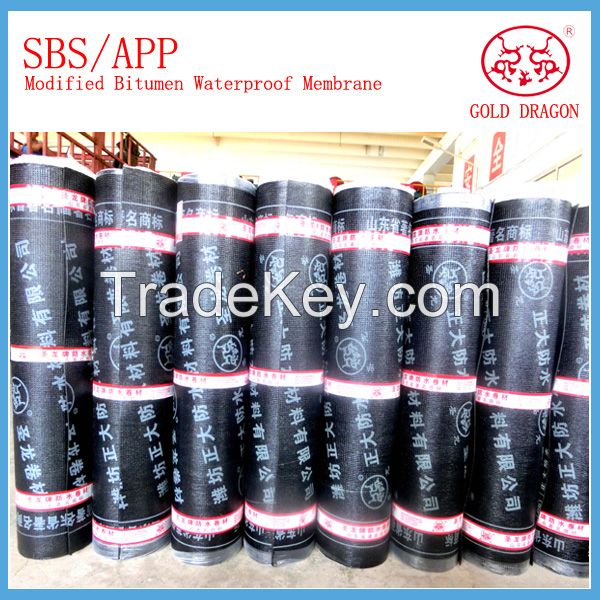Description
1. Applications
a) Roof and underground
in industrial and civil buildings.
b) Bridge, subway,
tunnel, swimming pool, etc.
c) Waste landfill,
sewage plant, irrigation system, etc.
2.Advantages
1) The SBS modified bitumen is
showed good performance on waterproofness;
2) It will be a high-strength
membrane to resist water;
3) Puncture-resisting,
tear-resisting, corrosion-resisting, mould-resisting and
weather-resisting;
4) Good tensile strength and
elongation;
5) Strong adaptability for
substrate shrinkage, deformation and cracks;
6) Both high and low
temperature resistance, especially in cold areas;
7) Convenient to apply: use
heat fusion method in all seasons.
3. Storage and Transportation
1) Different type and
specification should be stacked separately;
2) Avoid sun-scorched and
rain-drenched, Be ventilation;
3) The storage
temperature should below *0°C;
4) It have to be one
storey when keep in storage stand on end, and shouldn't be more
than two storeys when transporting;
5) Avoid tilting or
lateral drift, Covered with tarpaulin if need;
6) Base on the normal
storage and transportation, the storage period is one year from the
date of production.
4. Construction Technology
1) Base processing: the base surface must
be clean, solid, level, dry; no grit, rift and loosing dust. For a
large recess, fill it with cement mortar and then level it. Remove
the protrusion and clean dust. If working on base slab or lateral
face, water lowering should be done.
2) Painting primer: before laying the
membrane, clean the dust on the surface of concrete base with dust
catcher or dust-blower.
3) Heat to melt: place membrane correctly,
fire torch, heat the membrane with base entirely, when the surface
of the membrane is black and bright with a fusion layer, apply the
membrane and press it into a solid and flat state. Before the
membrane is cool, seal the edge of joint by float.
4) Requirements for lapping: There should
be less than 3 layers of lapping, with the joint seams appearing as
"T" type, avoid 4 layers of lapping. The width of longitudinal
lapping is between *0 and *0mm, and of end-lap joint **0mm.
